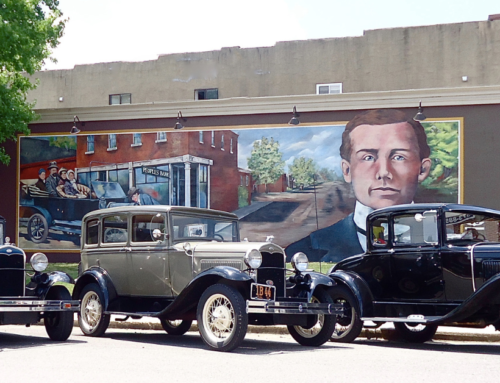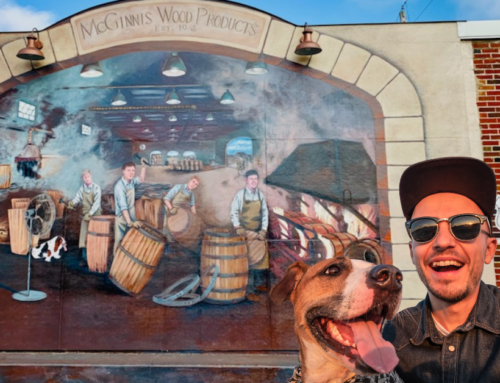Chamber needs military information for Fourth of July Celebration and Remembrance
While many think of history as a boring look at things of long ago, it is really an always-changing series of events that continue to touch our lives. A recent article in the Cuba Free Press about the 2010 plans for Cuba Missouri’s Fourth of July and fireworks brought that to mind.
The Chamber of Commerce has taken over the responsibility for the fireworks from the city. Dr. Don Fuchs, on behalf of the Chamber, originated the idea of dedicating each year’s fireworks to a soldier from the area who lost his or her life serving our country during a war. The first soldier chosen for this commemoration is Floyd Vaughn who died in WW II. His brothers Wilbur and Charlie still live in Cuba.
Floyd Vaughn is one of the faces in the Blue Bonnet/Gold Star Boys Mural, located just off Route 66. The Blue Bonnet was the train that took Cuba’s young men off to the battles of WW II. But the young men pictured in the window of the train did not return. They sacrificed their lives serving their country.
In a Cuba Free Press letter to the editor at the time the Gold Star Boys Mural was painted, Wilbur Vaughn remembered his family taking his brother Floyd to the Blue Bonnet during World War II. Wilbur then went home, sat on the porch, and heard the whistle of the Blue Bonnet as it left. He remembered how sad it sounded.
You might wonder why these men who died in the service of their country were called “Gold Star Boys.” With Public Law 534, the 89th Congress directed the design and distribution of a lapel button–known as the Gold Star Lapel button–to identify widows, parents, and next of kin of members of the Armed Forces of the United States who lost their lives during hostilities.
Cuba area Gold Star boys who gave their lives during WW II were the following: Ralph Burnell Fishwick-Navy; Preston A. (Bud) Gibson Jr.-Army; Lawrence E. Grant-Navy; Dale K. Hudson-Navy; Rex Hilliard Powell-Naval Reserve; and Floyd Cecil Vaughn-9th Air Corps.
The lapel button, which is issued by the Department of Defense, is gold and is on a purple background for combat death and all gold for death while in service. When one of the servicemen was killed in combat, his relatives received this gold button. Servicemen’s mothers wore the medal to show that they had lost a son. It was a badge not only of sadness for loss, but also one of pride because their sons had sacrificed for their country.
The recent Cuba Free Press article went on to list Pickney Brewer (Korea) and Neal Crowder and Clifford Mullen (Viet Nam) as losing their lives during war time.
Dr. Fuchs and his Fourth of July Committee are trying to compile information on other military heroes who won the Purple Heart or were killed in action so that they may be honored. Send or give information to Fuchs or the Chamber of Commerce Visitor Center at the I-44 overpass.
Even though the 1940s events of WW II are long over, the sacrifices that countless Americans made are still remembered. During a bus mural tour this fall, the tour director asked the WW II Veterans to get off the bus and pose for a photo in front of the train mural. They were applauded when they returned to their seats on the bus.
History continues to touch our lives. Remember that this Independence Day when you look up in the sky at the fireworks. Think of the price of that independence.
To read the Cuba Free Press article “Military info needed for Fourth of July Celebration” go here.
For more information on the Gold Star Mothers’ organization, go to goldstarmoms.com
Michelle Loughery of Canada, along with her assistant Sara Lindsay, returned to Cuba for this mural. Loughery also painted the A.J. Barnett mural. Local artist Shelly Smith Steiger assisted on both murals.










Leave A Comment